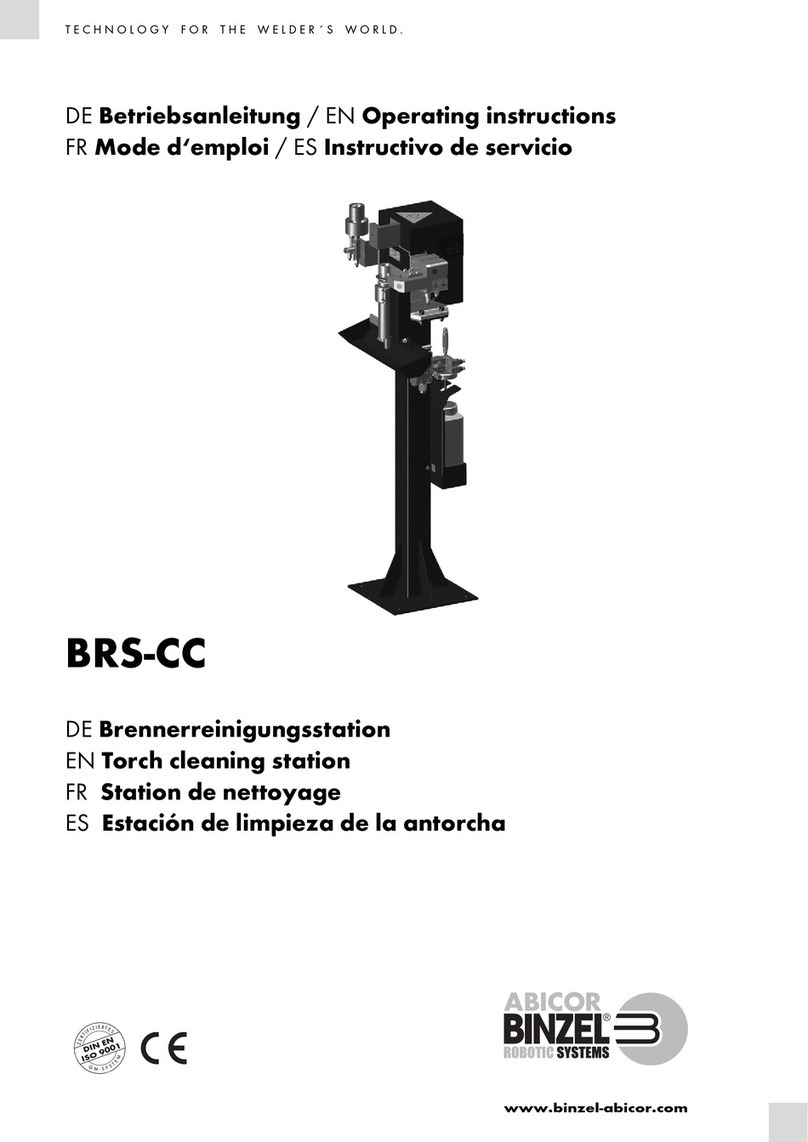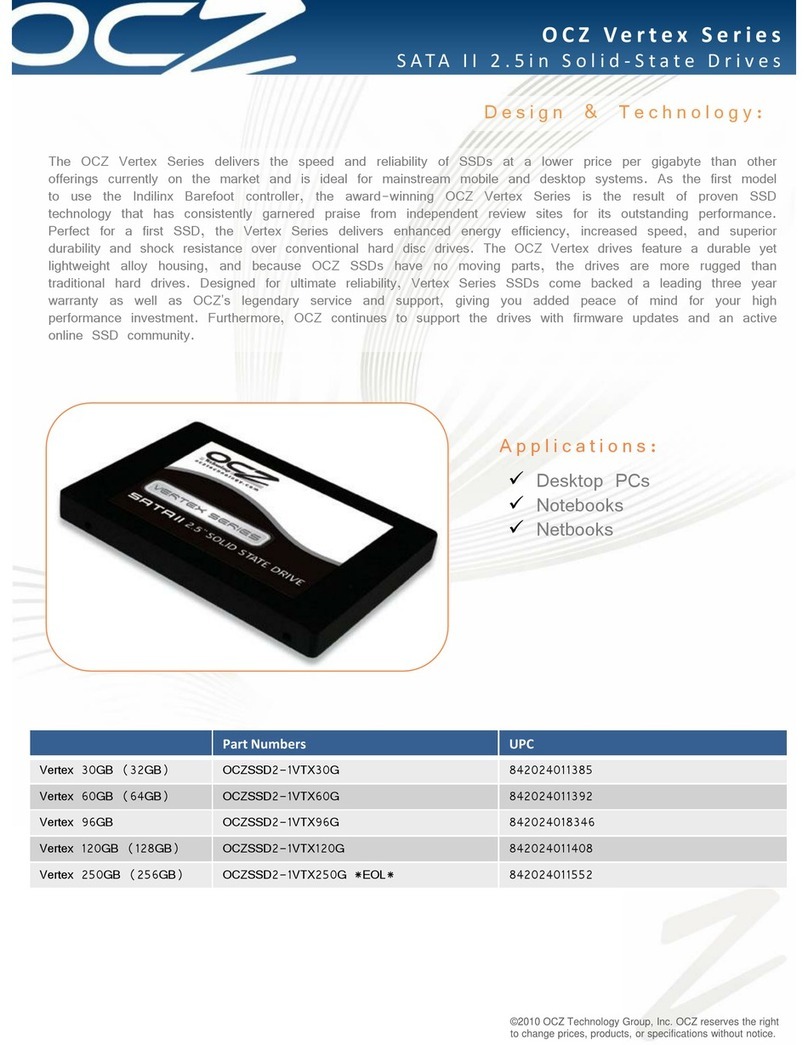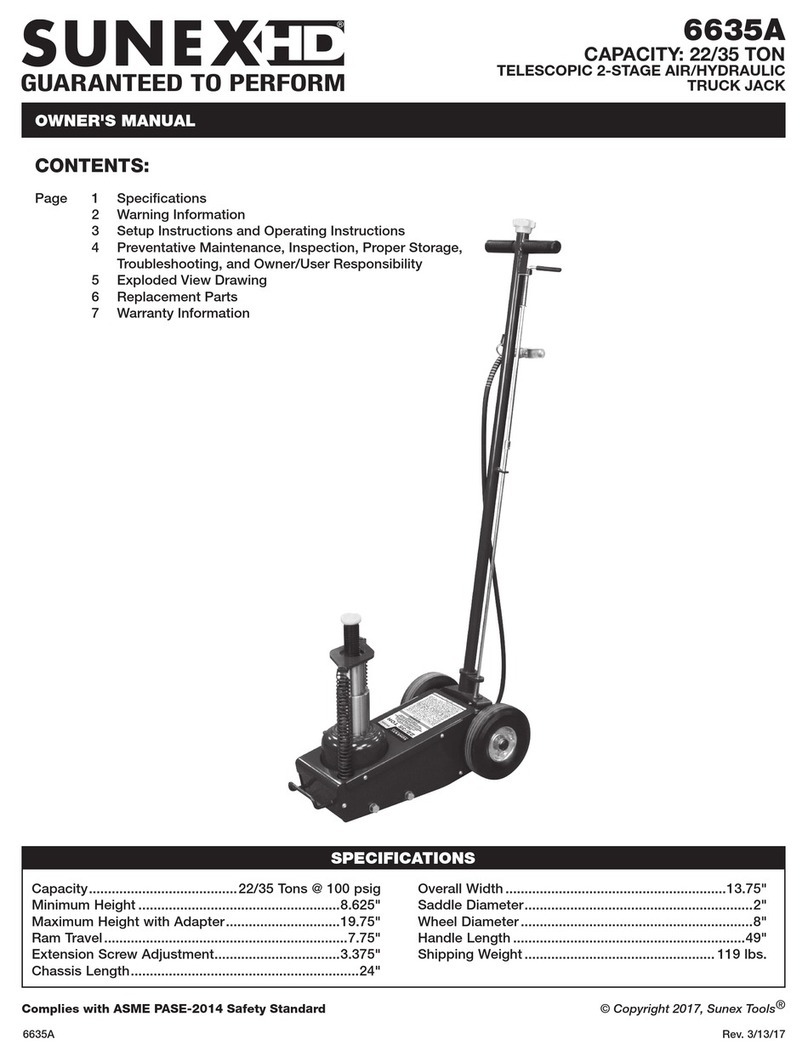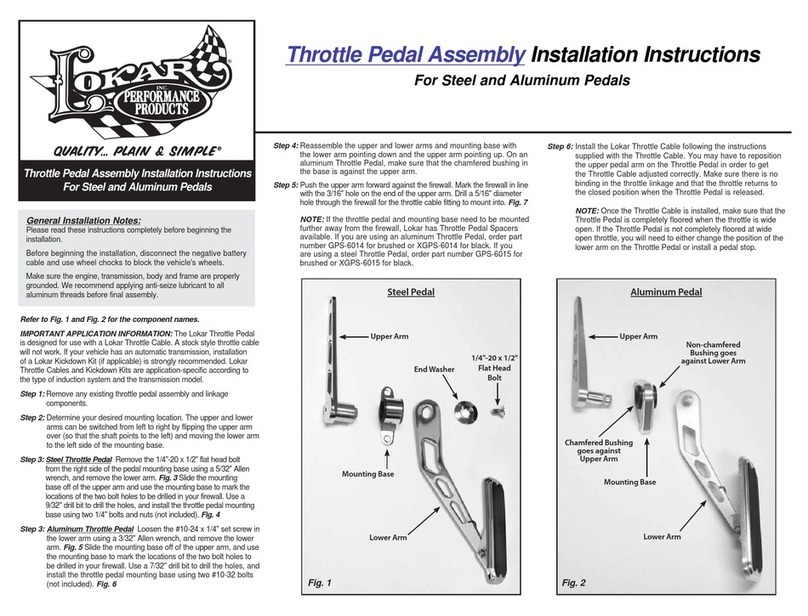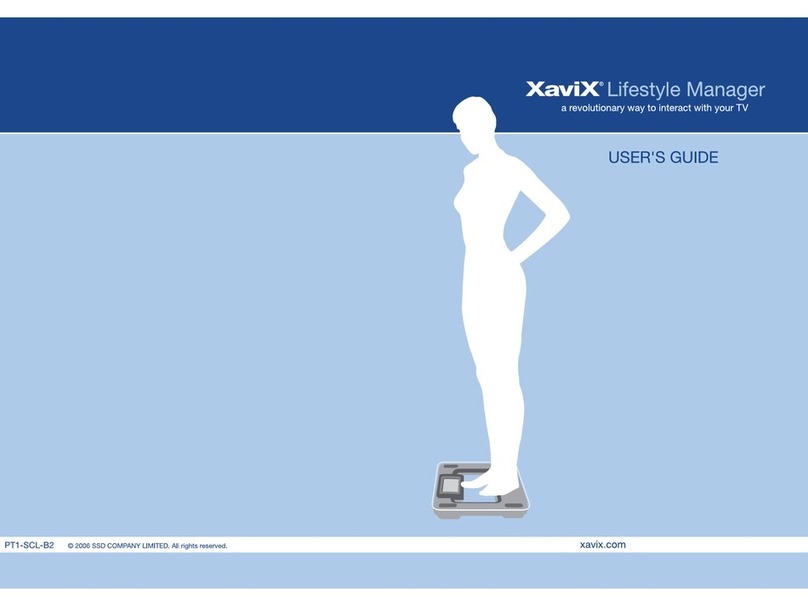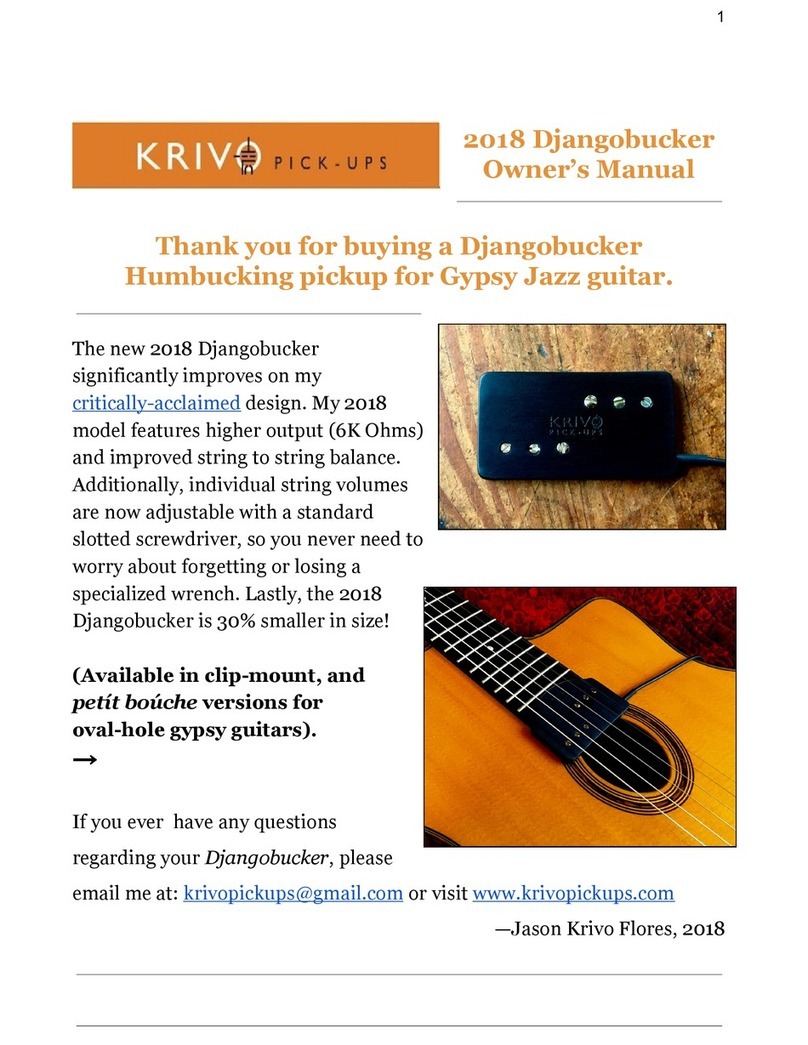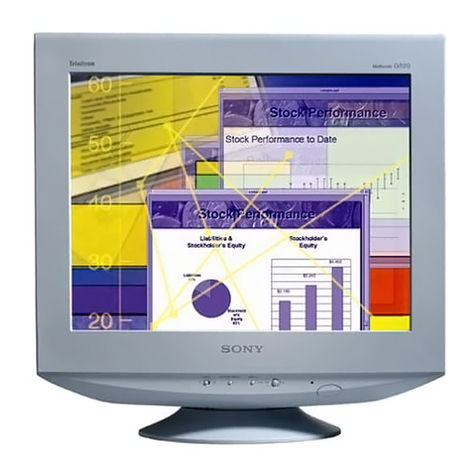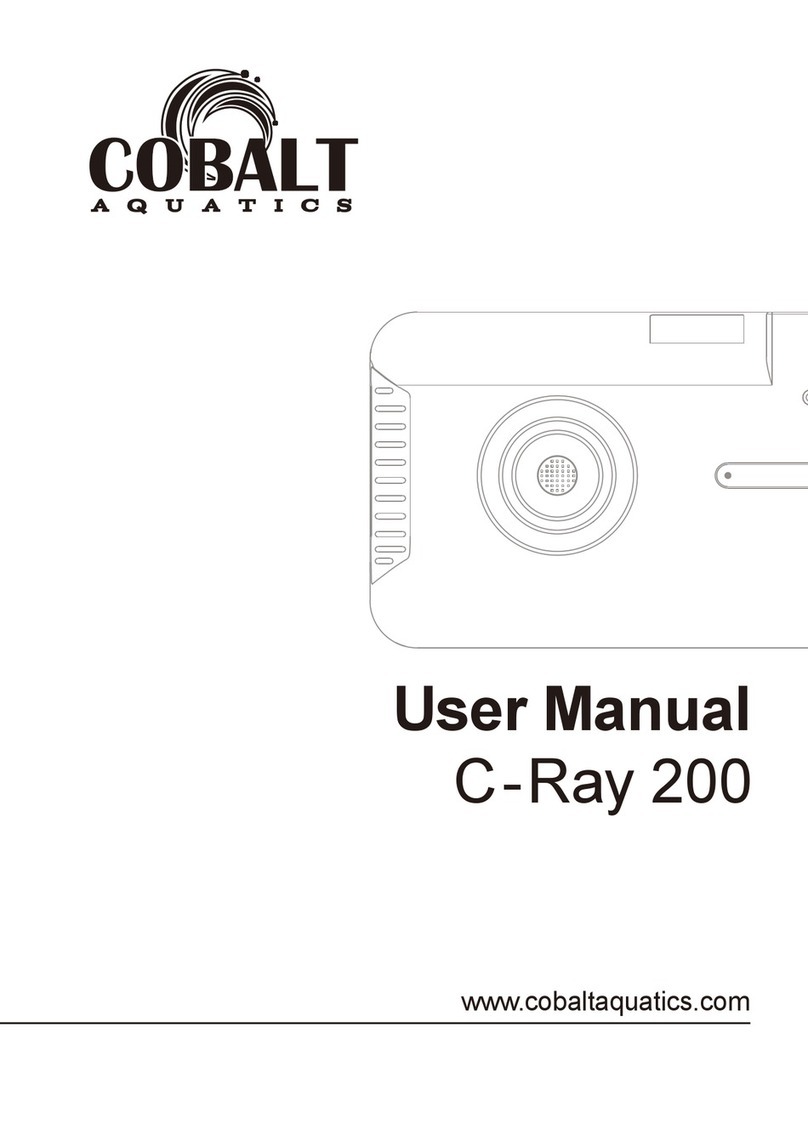Glas Craft GUARDIAN A6-6000 User manual

USER MANUAL
GUARDIAN
A6-6000 Dispensing System
T
H
I
S
E
Q
U
I
P
M
E
N
T
I
S
P
R
O
T
E
C
T
E
D
B
Y
CHINESE
PATENT
ZL 200630130159.1
T
H
I
S
E
Q
U
I
P
M
E
N
T
I
S
P
R
O
T
E
C
T
E
D
B
Y
U.S.A.
PATENT
D546,840
Important Safety Instructions
Read all warnings and instructions in
this manual. Save these instructions.
For use with non-ammable foam and polyurea.
Not for use in explosive atmospheres.

Table Of Contents
Section 1 Installation
Warnings ............................................................................................................................................................ 1
Introduction ........................................................................................................................................................ 5
Standard Equipment .......................................................................................................................................... 6
Equipment Assembly .......................................................................................................................................... 7
Section 2 Operation
Start-up Instructions ........................................................................................................................................... 16
Shut–down Instructions ...................................................................................................................................... 19
Daily Start-Up Instructions ................................................................................................................................. N/A
Section 3 General Information
Assembly Drawings ............................................................................................................................................. 23
Sub Assembly Drawings ...................................................................................................................................... 30
Maintenance ........................................................................................................................................................ 36
Troubleshooting ................................................................................................................................................... 37
Options ................................................................................................................................................................ 39
Section 4 Warranty and Reference Information
Notes ...................................................................................................................................... 41
Technical Data ......................................................................................................................... 42
Limited Warranty Policy ............................................................................................................ 43
Technical Assistance ................................................................................................................ 44
For Your Reference ............................................................................................. INSIDE BACK COVER
N/A = Non Applicable

1
Warnings
The following warnings are for the setup, use, grounding, maintenance, and repair of this equipment. The exclamation
point symbol alerts you to a general warning and the hazard symbol refers to procedure-specic risk. Refer back to these
warnings. Additional, product-specic warnings may be found throughout the body of this manual where applicable.
WARNING
ELECTRIC SHOCK HAZARD
Improper grounding, setup, or usage of the system can cause electric shock.
Turn off and disconnect power cord before servicing equipment.
Use only grounded electrical outlets.
Use only 3-wire extension cords.
Ensure ground prongs are intact on sprayer and extension cords.
Do not expose to rain. Store indoors.
•
•
•
•
•
TOXIC FLUID OR FUMES HAZARD
Toxic uids or fumes can cause serious injury or death if splashed in the eyes or on skin, inhaled, or
swallowed.
Read MSDS’s to know the specic hazards of the uids you are using.
Store hazardous uid in approved containers, and dispose of it according to applicable guide-
lines.
Always wear impervious gloves when spraying or cleaning equipment.
•
•
•
PERSONAL PROTECTIVE EQUIPMENT
You must wear appropriate protective equipment when operating, servicing, or when in the operating
area of the equipment to help protect you from serious injury, including eye injury, inhalation of toxic
fumes, burns, and hearing loss. This equipment includes but is not limited to:
Protective eyewear
Clothing and respirator as recommended by the uid and solvent manufacturer
Gloves
Hearing protection
•
•
•
•
SKIN INJECTION HAZARD
High-pressure uid from gun, hose leaks, or ruptured components will pierce skin. This may look like
just a cut, but it is a serious injury that can result in amputation. Get immediate surgical treatment.
Do not point gun at anyone or at any part of the body.
Do not put your hand over the spray tip.
Do not stop or deect leaks with your hand, body, glove, or rag.
Close material shutoff valves when not spraying.
Follow Pressure Relief Procedure in this manual, when you stop spraying and before cleaning,
checking, or servicing equipment.
•
•
•
•
•

2
WARNING
FIRE AND EXPLOSION HAZARD
Flammable fumes, such as solvent and paint fumes, in work area can ignite or explode. To help pre-
vent re and explosion:
Use equipment only in well ventilated area.
Eliminate all ignition sources; such as pilot lights, cigarettes, portable electric lamps, and plastic
drop cloths (potential static arc).
Keep work area free of debris, including solvent, rags and gasoline.
Do not plug or unplug power cords, or turn power or light switches on or off when ammable
fumes are present.
Ground all equipment in the work area.
Use only grounded hoses.
Hold gun rmly to side of grounded pail when triggering into pail.
If there is static sparking or you feel a shock, stop operation immediately. Do not use equip-
ment until you identify and correct the problem.
Keep a working re extinguisher in the work area.
•
•
•
•
•
•
•
•
•
PRESSURIZED ALUMINUM PARTS HAZARD
Do not use 1,1,1-trichloroethane, methylene chloride, other halogenated hydrocarbon
solvents or uids containing such solvents in pressurized aluminum equipment. Such
use can cause serious chemical reaction and equipment rupture, and result in death,
serious injury, and property damage.
EQUIPMENT MISUSE HAZARD
Misuse can cause death or serious injury.
Do not operate the unit when fatigued or under the inuence of drugs or alcohol.
Do not exceed the maximum working pressure or temperature rating of the lowest rated system
component. See Technical Data in all equipment manuals.
Use uids and solvents that are compatible with equipment wetted parts. See Technical Data in
all equipment manuals. Read uid and solvent manufacturer’s warnings. For complete informa-
tion about your material, request MSDS forms from distributor or retailer.
Check equipment daily. Repair or replace worn or damaged parts immediately with genuine
manufacturer’s replacement parts only.
Do not alter or modify equipment.
Use equipment only for its intended purpose. Call your distributor for information.
Route hoses and cables away from trafc areas, sharp edges, moving parts, and hot surfaces.
Do not kink or over bend hoses or use hoses to pull equipment.
Keep children and animals away from work area.
Comply with all applicable safety regulations.
•
•
•
•
•
•
•
•
•
•
MOVING PARTS HAZARD
Moving parts can pinch or amputate ngers and other body parts.
Keep clear of moving parts.
Do not operate equipment with protective guards or covers removed.
Pressurized equipment can start without warning. Before checking, moving, or servicing equip-
ment, follow the Pressure Relief Procedure in this manual. Disconnect power or air supply.
•
•
•
BURN HAZARD
Equipment surfaces and uid that’s heated can become very hot during operation. To avoid
severe burns, do not touch hot uid or equipment. Wait until equipment/uid has cooled completely.
Warnings

3
Isocyanate Hazard
Spraying materials containing isocyanates creates
potentially harmful mists, vapors, and atomized
particulates.
Read material manufacturer’s warnings and
material MSDS to know specic hazards and
precautions related to isocyanates.
Prevent inhalation of isocyanate mists, vapors, and
atomized particulates by providing sufcient ventila-
tion in the work area. If sufcient ventilation is not
available, a supplied-air respirator is required for
everyone in the work area.
To prevent contact with isocyanates, appropriate
personal protective equipment, including chemically
impermeable gloves, boots, aprons, and goggles, is
also required for everyone in the work area.
Moisture Sensitivity of
Isocyanates
Isocyanates (ISO) are catalysts used in two component
foam and polyurea coatings. ISO will react with moisture
(such as humidity) to form small, hard, abrasive crystals,
which become suspended in the uid. Eventually a lm will
form on the surface and the ISO will begin to gel, increas-
ing in viscosity. If used, this partially cured ISO will reduce
performance and the life of all wetted parts.
The amount of lm formation and rate of crystal-
lization varies depending on the blend of ISO,
the humidity, and the temperature.
To prevent exposing ISO to moisture:
Always use a sealed container with a desiccant dryer
in the vent, or a nitrogen atmosphere. Never store ISO
in an open container.
Keep the ISO lube pump reservoir lled with Graco
Throat Seal Liquid (TSL), Part 206995. The lubricant
creates a barrier between the ISO and the atmosphere.
Use moisture-proof hoses specically designed for
ISO, such as those supplied with your system.
Never use reclaimed solvents, which may contain
moisture. Always keep solvent containers closed when
not in use.
Never use solvent on one side if it has been contami-
nated from the other side.
Always park pumps when you shutdown.
Always lubricate threaded parts with Part 217374 ISO
pump oil or grease when reassembling.
•
•
•
•
•
•
•
Warnings

4
Keep Components A and B
Separate
CAUTION
To prevent corss-contamination of the equipment’s wet-
ted parts, never interchange component A (isocyanate)
and component B (resin) partrs. The gun is shipped with
the A side on the left. The uid manifold, uid hous-
ing, side seal assembly, check valve cartridge, and mix
chamber are marked on the A side.
Foam Resins with 245 fa
Blowing Agents
New foam blowing agents will froth at temperatures above
90°F (33 °C) when not under pressure, especially if agitat-
ed. To reduce frothing, minimize preheating in a circulation
system.
Changing Materials
When changing materials, ush the equipment mul-
tiple times to ensure it is thoroughly clean.
Always clean the uid inlet strainers after ushing.
Check with your material manufacturer for chemical
compatibility.
Most materials use ISO on the A side, but some use
ISO on the B side.
Epoxies often have amines on the B (hardener) side.
Polyureas often have amines on the B (resin) side.
•
•
•
•
•
Warnings

5
Section 1 - Installation: Introduction
Introduction
Before operating, maintaining or servicing any
GlasCraft system, read and understand all of the
technical and safety literature provided with GlasCraft
products. If you do not have the proper or related
manuals and safety literature for your GlasCraft system,
contact your GlasCraft distributor or GlasCraft, Inc.
In this GlasCraft technical and safety publication, the
following advisories will be provided where appropriate:
Information about the procedure in progress.
Is imperative information about equipment protection.
Indicates a hazardous situation that can
result in minor or moderate injury.
Indicates a hazardous situation that can
result in death or serious injury.
Indicates a hazardous situation that can
result in electrical shock or serious injury.
The information in this document is intended only to
indicate the components and their normal working
relationship typical use. Each assembly should be
directed by a GlasCraft distributor or made from the
GlasCraft Assembly instructions provided.
This manual provides information for the assembly, opera-
tion, maintenance and service of this GlasCraft product as
used in a typical conguration. While it lists standard speci-
cations and procedures, some deviations may be found.
In order to provide our users with the most up-to-date
technology possible, we are constantly seeking to improve
products. If a technological change occurs after a prod-
uct is on the market, we will implement that technology in
future production and, if practical, make it available to cur-
rent users as a retrot, update or supplement. If you nd
a discrepancy between your unit and the available docu-
mentation, contact your GlasCraft distributor to resolve the
difference. GlasCraft, Inc. reserves the right to change or
modify this product as it deems necessary.
Careful study and continued use of this manual will pro-
vide a better understanding of the equipment and process,
resulting in more efcient operation, longer trouble-free
service and faster, easier troubleshooting.
WARNING
CAUTION
ELECTRICAL SHOCK HAZARD

Section 1 - Installation: Standard Equipment
6
Model - A6-6000
Part
Number Description
23675- A6-6000 UNIT
23950-02 PROBLER P2 GUN
249588 HIGH PRESSURE HOSE ASSEMBLY
256626 WHIP HOSE ASSEMBLY
23473-00 HEATER REPAIR KIT
GC-1398 USER MANUAL
59934-04 DIOCTYL PHTHALATE, 1 QT.
261821 REQUIRED TO COMPLETE THE HOSE ELECTRICAL CIRCUIT.

7
Section 1 - Installation: Equipment Assembly
Guardian Line Installation Guide
GlasCraft Systems are factory assembled. If any
questions arise concerning air or electrical
connections, please refer to illustrations located in
the forward portion of this User Manual or contact
your GlasCraft distributor.
1. Advanced preparation
a. Before beginning any installation, ensure that the
applicator has the desired power supply available,
(i.e. 220V single phase / 380V three phase),
within 10 ft. of were the machine is to be placed.
If the machine needs to be further that 10 ft. from
the power supply, additional lengths of properly
sized electrical cable will be required.
Never use a smaller gauge size than supplied
by the factory!
b. Depending on the electrical setup, it may be
necessary to install an appropriate plug on the end
of the cable. GlasCraft will not supply this plug, as
we are unaware of which style will be needed.
c. Consult the data sheet for the specic unit being
installed to determine the proper breaker size
needed.
d. You will need to run an air line to the area where
the machine will be placed. consult the data
sheet the specic unit being installed to determine
much clean, dry air will be needed to supply the
machine. If the air line is under 25 ft. use a
minimum of 1/2 in. I.D. pipe or hose. If the air line
is longer than 25 ft., use a minimum of 3/4 in.
pipe or hose. Anything smaller than these
diameters will severly affect the machine’s
performance!
Do not use any quick disconnect ttings on
the main air line going to the machine!
Check your air-compressor to make sure it is
capable of suppling the maximum amount of air
that the machine requires. All GlasCraft equipment
is rated at 25 CFM (cubic foot per minute) @ 90-
100 (708 liters @ 6.3 - 7.7 BAR) do not exceed
125 PSI (14 BAR).
2. Move material drums to the area that the equipment will
be placed, ensuring that they are not sitting directly on
the oor. Simply place the drums on top of a palate or
similar device, so the drum bottoms will not be in
contact with any cold surfaces.
3. Open all boxes that came with the machine and verify
that all items are accounted for.
4. Lay out the 17666-05 Transfer Kit (this will come in a
large bag inside the main box).

88
Section 1 - Installation: Equipment Assembly
5. Remove the “red” plastic caps that cover the material
inlets on the bottom of the pumps, and the air inlets
on the air motor portion of the pumps.
6. Install a “y” lter to the oulet of both pumps.
Besure to use teon tape on the threads.
7. Install a male quick disconnect tting to air inlet of
both pumps. Besure to use teon tape on the threads.

9
Section 1 - Installation: Equipment Assembly
8. Remove the 2 inch bung caps on both the A and B
side drums. Install the transfer pump collars into
the bung holes, making sure to lubricate the threads
with vaseline or grease, thus enabling easy removal
when needed.
9. Make sure that the red caps have been removed
from the bottom of the pumps and then slide the
transfer pumps into the collars. Tighten the wing
nuts on the collars, securing the transfer pumps in
place. Loosen the 3/8 in vent plugs on both drums
allowing for ventilation. If using a desiccant dryer on
the A side, install it now.
10. Remove the metal caps from the material pumps.

10
Section 1 - Installation: Equipment Assembly
11. Connect one end of each material hose to the inlet
ttings located on the back of the machine. It is
highly recommended that you label the (POLY)
hose with BLUE tape and the (ISO) hose with RED
tape to ensure that you don’t put the wrong transfer
pump in the opposite material drum.
12. Connect the other end of the material hoses to
there correct transfer pumps. Ensure that they
are not reversed and tighten securely.
POLY
Material
Drum

11
POLY
Material
Inlet Fitting
ISO
Material
Inlet Fitting
13. a. Install the female quick-disconnect ttings
p/n 22642-01 on to the ¼ in. air lines p/n 17798-10
that came in the transfer kit. Besure to use teon
tape on the threads.
b. Attach the quick-disconnect ttings to the male
receivers on the transfer pumps.
14. Attach the other end of the airlines to the far right
regulator on the machines air manifold.
ISO
Material
Drum
Section 1 - Installation: Equipment Assembly

12
Section 1 - Installation: Equipment Assembly
15. If the optional scuff-jacket p/n FM-494 is being
used (highly recommended, sold separately)
install it over each individual section of hose
before proceeding any further. Securely tape both
ends of scuff jacket to the hose assembly.
16. Locate the thermal couple wire protruding from the
B side tting on the front of the machine. Un-coil
the wire and lay it out straight.
Main power from power source should be disconnected
or turned off to console before making hose
connections.
17. Feed the the thermal couple wire into the B side
portion of the hose and pull the rest of the hose up
until you can connect the hose to the front of the
machine. Tighten the hose securely, being careful
not to twist the hose in an “un-natural” bend.
Refer to the last page in this installation guide for
instructions on how to secure hoses properly.
18. Connect the 1/4 in. air line on the hose assembly to
the air line whip hose one the front of the machine.
19. Connect the electrical wires.
• Ensure the wire ends are 5/8 in. (.625 mm) long.
If they are not, use a sharp pair of scissors to strip
all four wire ends to the correct length.
Be careful, do not cut or nick any copper strands. If
more than ve strands are cut or nicked, trim and
re-strip the wires.
New hoses are pre-stripped to the correct length;
remove the insulation to expose the bare wire.
20. Ensure the strip length is correct by tting the ferrule
over the exposed wire. The ferrule should be ush
with the end of the wire.

13
Section 1 - Installation: Equipment Assembly
If the wire is short of the ferrule end, adjust the strip
length accordingly. If bare is protruding from the
ferrule, trim it ush to the end of the ferrule.
21. Remove the ferrule and apply oxide inhibitor to the
bare wire.
22. Reinsert the wire in the ferrule and apply more
oxide inhibitor to the ferrule and wire end.
23. Pair the electrical wires as follows:
A-Hose to A-Hose
B-Hose to B-Hose
When connecting the rst hose to the proportioner,
wire painting does not make a difference.
24. Insert one wire from the heated hose into the
connector. Ensure that the ferrule is mating with
the connector insert and attach the set screw.
Torque the set screw to 60 in.-lbs. (6.78 N•m).
To reach approximately 60 in.-lbs. (6.78 N•m),
complete 4.5 revolutions with the hex wrench
after the set screw contacts the ferrule.
25. Repeat steps 21 through 24 for remaining.
Re-torque all four set screws to 60 in.-lbs. (6.78 N•m),
The set screws will be approxitmately ush with the
connector.
26. Insert the cap plugs over the set screws.
27. Repeat steps 21 through 26 for additional hoses.

14
Section 1 - Installation: Equipment Assembly
28. Add extra hose lengths if necessary.
Required Tools:
Opened - end wrenches - 3/4 in.
a. Lay hoses out straight.
b. Couple hoses together with supplied union ttings
and tighten nger-tight.
c. • Hold crimp tting hex (3/4 in.), and union tting
together, allowing the hose to hold its natural
line.
• Using 3/4 in. wrenchs to tighten swivel tting to
union, not allowing crimp tting or union to turn.
Repeat on opposite side of union.
This practice is required on all connection
points.
1) Hose and machine
2) Hose and gun
3) Adding additional hose sections

15
21129-01
1075A A
L. LARSON 1-26-05
21192-01
LABEL, TRANSFORMER
SIZE: (ref.): 4" X 4-1/4"
COLOR:
BORDER, LINES, AND TEXT - BLACK
BACKGROUND - WHITE
MATERIAL:
ADHESIVE-BACKED WHITE POLYESTER with CLEAR
POLYESTER LAMINATE ON THE TOP OF LABEL.
29. Connect the supplied swivel tting p/n 23825-00
to the trigger air line before attaching the hose
assembly to the gun.
30. Connect hose assembly and the gun as
shown. The ttings on the hose assembly
are sized differently and will attach only one way.
31. Fluid and air connections between the system and
gun should now be complete and tight.
When Main Power to system console is on, the white
and black wires in the console are always live!
Disconnect or turn off Main Power source before
opening console to make any repairs or before making
any electrical repair of any type to the system.
If you do not understand the electrical hook-up
described above, consult your local GlasCraft distributor
OR a qualied electrician.
Electrical connections must be checked on a
periodic basis.
• 208/240 volt single phase
• L1 L2 GROUND
• 208/240 volt three phase
• L1 L2 L3 GROUND
• 380 volt three phase
• L1 (black)
• L2 (brown)
• L3 (black)
• L4 (blue)
• GROUND (green)
32. If more than 50 ft. of hose is used the transformer tap
setting will need to be set for proper hose length. The
sticker on the front cover will say which tap to move
the wire to. DO NOT MOVE THE COMMON LEG!
Section 1 - Installation: Equipment Assembly

Never leave machine unattended while system power
is on or system is running.
System running is dened as: preheat cycle of the hose
heat, primary heaters, or any pump operation.
Machine operators must be familiar with the
component functions and operation of the machine.
Pre-Operation Check List
A. Check that all ttings are securely tight.
B. Check electrical hook-up (qualied electrician
recommended).
C. Main power switch on Control Box should be
switched to OFF position.
D. Air Regulator turned (counter clock-wise) to OFF
position.
E. Hose Control and Primary Heater Control to OFF
position.
Do not place any part of the body in the path of the
material spray.
Do not point the gun at or near other personnel.
Do not look into the Mixing Chamber orice at any time.
Because of the hazardous materials used in this
equipment, it is recommended that the operator use
an air mask, goggles, protective clothing, and other
safety equipment as prescribed by current regulations,
recommendations of the chemical suppliers, and the
laws in the area where the equipment is being used.
Initial Start-Up Procedure
With all material and air lines connected and power
cable attached, the system is now ready for start-up.
Filling The System
1. Adjust Air Regulator to 20 PSI to ll system. Air
Motor will cycle slowly to ll Pumps, Heaters and
Hoses and stop.
2. Remove ISO & POLY side blocks from gun.
PROBLER P2
MAKE SURE VALVES ARE OFF
Section 2 - Operation: Start-Up Instructions
16

17
3. Place separate clean containers under each indi-
vidual side block. Slowly open material valves
(black arrow forward) on each side block to allow
trapped air to escape the hose and material to ow
into the containers until all air is purged from the
material system.
Remember to dispense one to two gallons of
material to clear the system of grease and
plasticizer that was used during factory testing.
4. Close manual material valves. Material pressure
gauges should now register approximately equal
pressure. If one side registers considerably more
pressure than the other side, go to the high pres-
sure side and bleed off some pressure by slightly
opening the manual material valve on the side
block over the container. Bleed pressure until both
sides are approximately the same pressure.
5. Dispose of waste material properly and in accor-
dance with chemical suppliers instructions and
local, state and federal regulations.
Before re-assembling Side Blocks, lubrication can be
applied by dabbing a white lithium grease into
holes inside of Gun Front Housing and wiping
grease over SideBlock Seals. Grease will purge
itself when air valve is turned on at Gun and Gun
is triggered.
6. Clean and lubricate Side Blocks and Seals thoroughly
and re-assemble on Gun. Make certain that the side
block screws are tighten securely.
7. Refer to material manufacturers operating instructions
for proper preparation of material, i.e, mixers, etc.
8. Leave Air Regulator at 20 PSI
9. Turn main power Switch to ON position.
10. Turn on Hose Control:
a. Push in the green power button.
b. Press up or down arrow buttons on the controller
until desired temperature setting is achieved.
Section 2 - Operation: Start-Up Instructions

18
11. Turn on the ISO & POLY Heater control:
a. Push in green power button.
b. Press up or down arrow buttons on the
controller until desired temperature setting is
achieved.
Straighten hose out at, to avoid uneven heating and
damage to internal wiring of the Hose Assembly.
Allow enough time for hose to warm up (approximately
15- 20 minutes). Remember that the heated hose does
not have a delta rating. The heated hose’s function is
to maintain the heat generated by the primary heaters
during system operation, and preheat material during
initial start-up. The hose should be set to maintain a
temperature close to the set point of the heaters.
Due to the expansion of urethanes when heated, it is
imperative that on cold start-up of the system that the
heaters be turned on and allowed to reach operating
temperatures before the Main Pump Air Regulator is
adjusted to the desired spray pressure. If you do not
allow the heaters to reach operating temperature before
adjusting air pressure, the material pressure will exceed
the set point of the over pressure switches causing the
system to shut down.
12. Adjust Main Air Regulator to material suppliers
specications.
13. Turn Purge Air and Material Valves ON at Gun.
ON OFF
14. Relieve any excess pressure by triggering the gun.
The Emergency Stop Switch is located on the bottom
right side of the control Panel, when depressed, it will
shut down the power and activate the Air Dump Valve.
To reset, turn handle on push button.
15. The system is now ready for operation.
Section 2 - Operation: Start-Up Instructions
Table of contents
Popular Other manuals by other brands

SmartLine
SmartLine SmartPoint T user manual
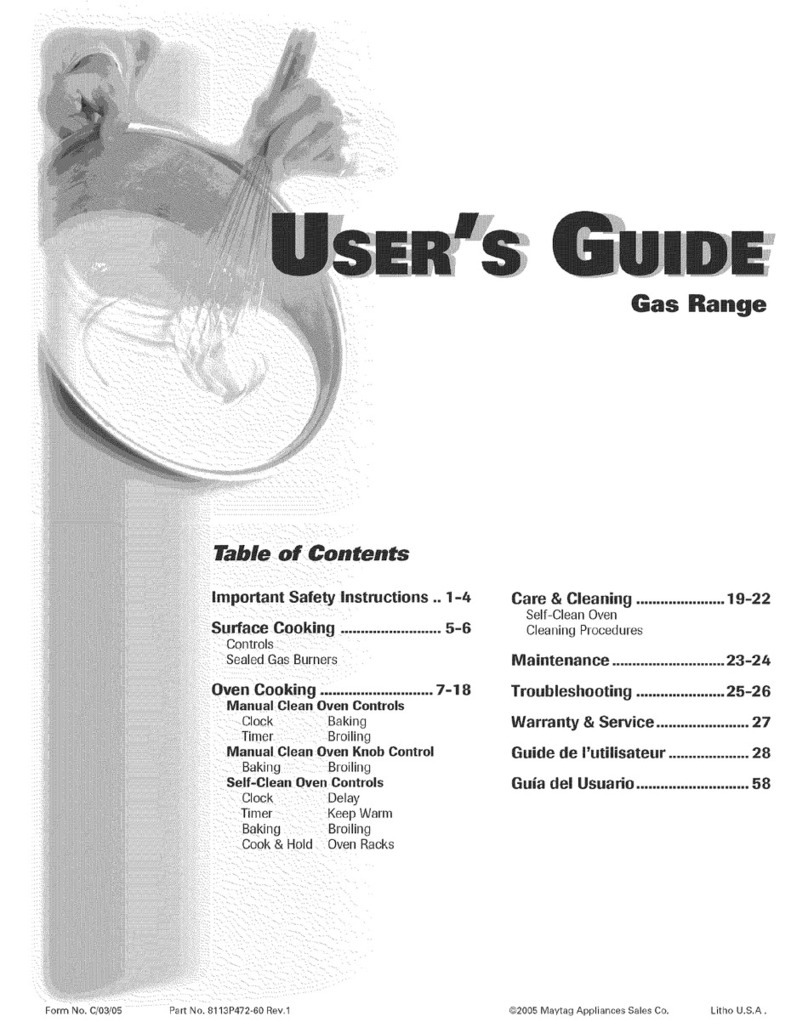
Maytag
Maytag CGR1425ADT User's guide manual
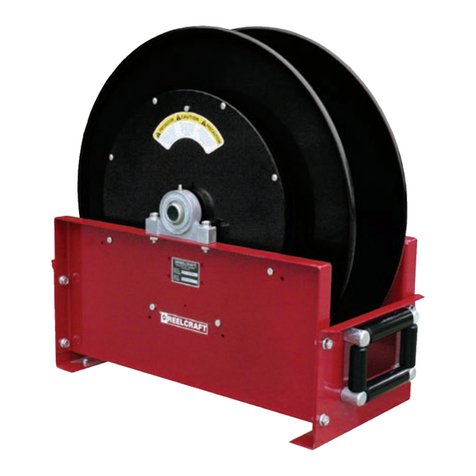
ReelCraft
ReelCraft FF9500 OLPBW118 operating instructions
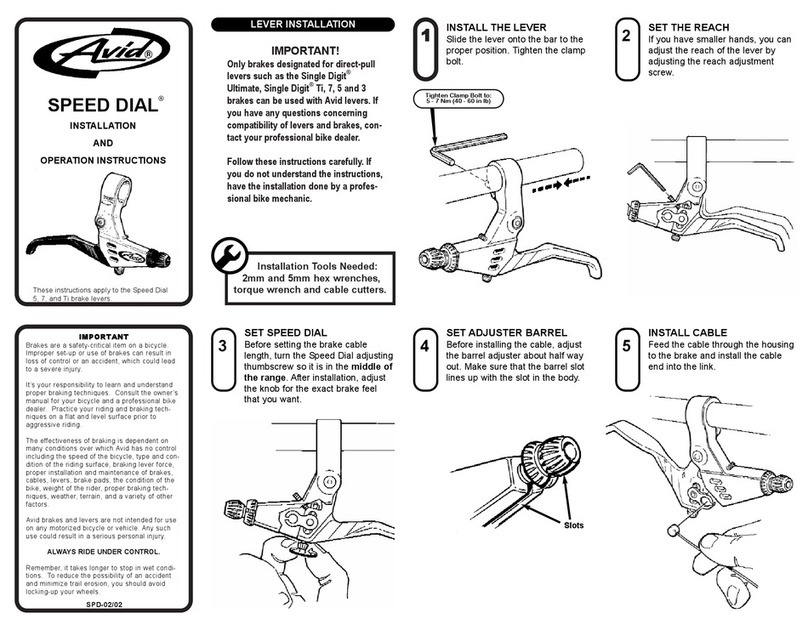
DAHON
DAHON SPEED DIAL Installation and operation instructions
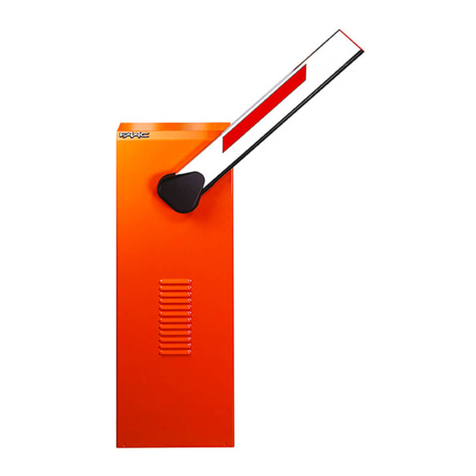
FAAC
FAAC 620 SR Series manual
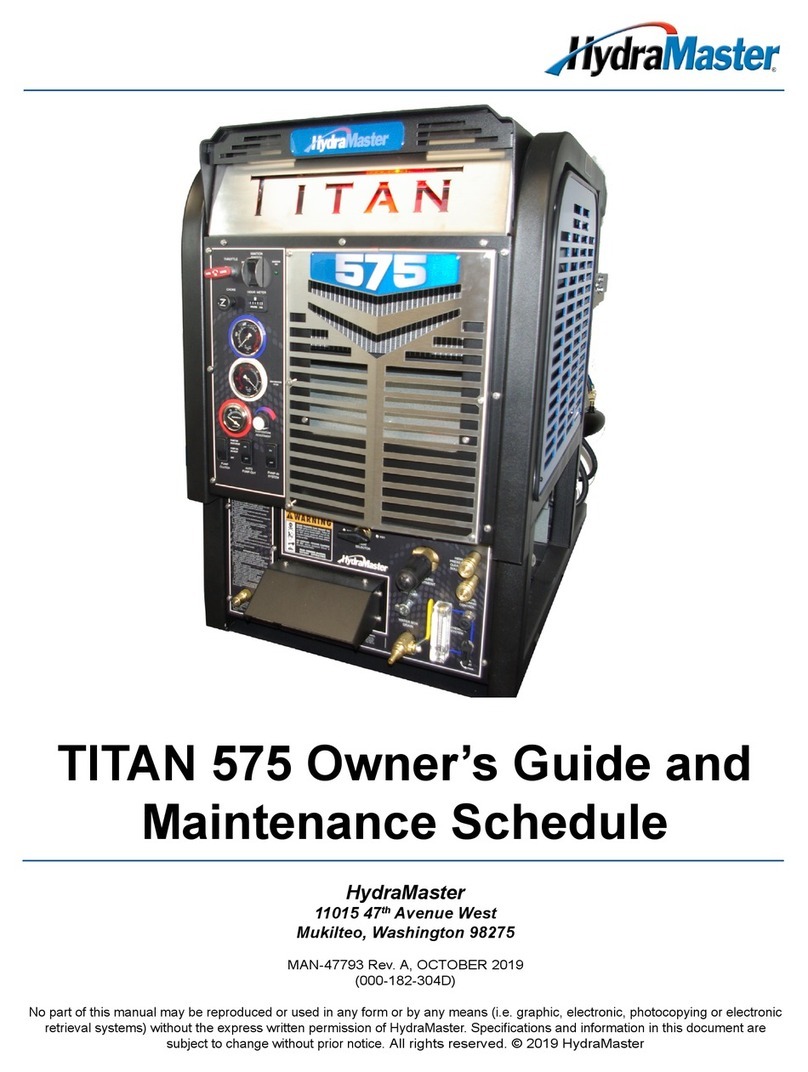
HydraMaster
HydraMaster Titan 575 Owner’s Guide and Maintenance Schedule


